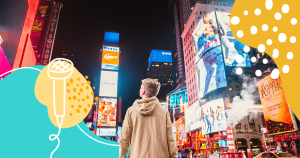What comes to mind when you think of the image of a bitten apple? What about when you hear someone say “just do it?” What if you hear someone humming the tune to “Two all-beef patties, special sauce, lettuce, cheese, pickles, onions, on a sesame-seed bun?”
Many of you will think of Apple, Nike, and McDonald’s right away. And it is not a coincidence that these brands are so vivid in people’s minds – branding strategies have defined distinctive assets that create a special place for them in our heads.
The connection is so strong that you have probably started humming the Big Mac jingle, haven’t you?
Distinctive assets are elements that stand out in the public’s memory and help brands consolidate themselves in the market. Now, thinking about Content Marketing strategies, do you think it’s possible to develop distinctive assets for your brand?
That’s what this article is about. Keep on reading to understand what distinctive assets are and how to develop them in Content Marketing!
What are distinctive assets?
Distinctive assets are elements that trigger the memory of a brand in the consumers’ minds without mentioning its name. They can be something you see, read, hear, touch, or feel, and immediately reminds you of a brand. We are talking, for example, about:
- slogans;
- colors;
- logos;
- fonts;
- music;
- sound effects;
- visual effects;
- scents;
- packaging;
- product shape;
- characters;
- celebrities.
These elements, when associated with a brand, create a picture in people’s heads. When they are reinforced enough by consistent and coherent communication, they “stick” to the memory. Thus, distinctive assets can be easily accessed among other memories with just a small trigger.
But it is not a coincidence that these elements stick to the memory. We are talking about branding work here.
Distinctive assets help create and consolidate its image with the public if the branding’s goal is to make it more desirable and remembered positively in the market. They work as mental triggers, reminding people of a brand and all its attributes and associations.
Why define distinctive assets for your brand?
We have never lived in a time so full of brands and commercial stimuli. If brands were already in our daily lives – on TV, radio, magazines, and billboards –, Digital Marketing has brought them to every moment of our lives.
So, at the end of the day, which brands do people really remember? With so much stimulus, it is hard to get that space.
And the truth is that people are not worried about it at all: if 77% of brands disappeared from the face of the earth, nobody would care. That is what research conducted by Havas Media shows.
LinkedIn reveals another interesting fact: half of the consumers incorrectly identify brands in ads and mistake them for competitors.
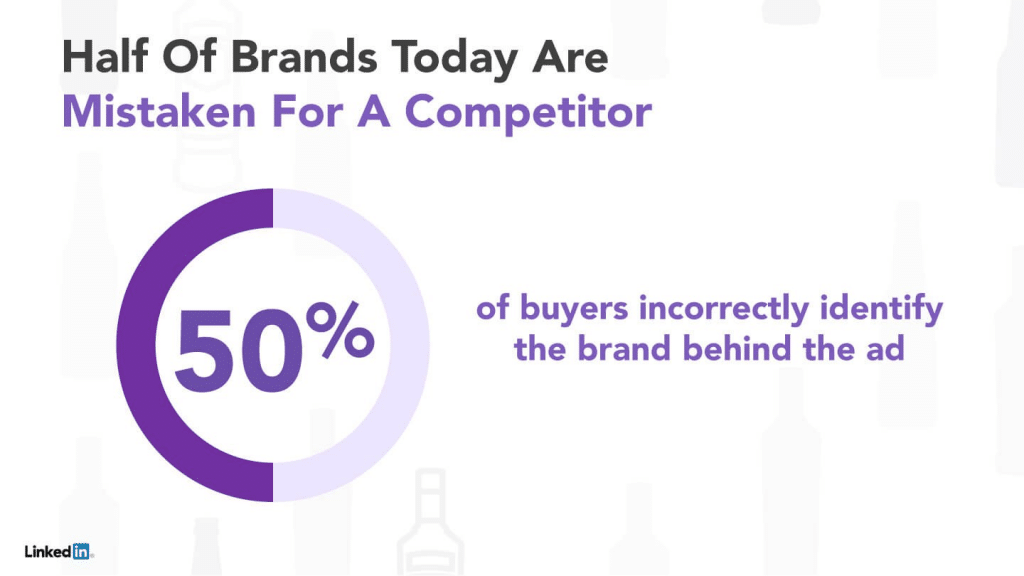
At this point, it becomes clear that brands have a hard time staying in people’s hearts and minds, right? For this reason, they need to create stronger connections with consumers – more precisely, with their perceptions and emotions. And this is where distinctive assets become relevant.
Distinctive assets manage to strengthen at least one brand element in the public’s imagination. That is already enough to reach distinction. From there, it is possible to establish a deeper connection with consumers, stir their emotions, and make a difference in their lives.
The same survey by Havas Media shows that people also expect brands to contribute to the quality of their life and their well-being. Therefore, they are willing to create positive connections with brands.
And a brand is nothing more than the set of experiences that the consumer has with it. These are associations of thoughts, feelings, perceptions, and sensations provoked by the outside world that are put together in people’s heads, forming the brand image.
Distinctive assets help to compose this experience and activate them in the memory of consumers. When hearing the theme song of a TV show, all past experiences are triggered in the memory. And each time this happens, the relationship with the brand is strengthened.
With stronger bonds, brands with powerful distinctive assets can stand out in the market, be easily recognized, and even influence purchasing decisions.
What are the benefits of using distinctive assets?
We are going to describe in detail the main benefits of distinctive assets for branding and marketing strategies. Check them out!
They increase brand recognition
Distinctive assets make brands much more recognizable by the public. You don’t even need to mention its name for it to be remembered.
This recognition is important because it helps consolidate the brand image and creates brand awareness, whose goal is to associate the brand’s elements with all the definitions of branding in the consumers’ minds.
It is interesting to think of distinctive assets in international marketing, especially since many of these elements work regardless of the language spoken. An image, a sound, or a character, for example, can be recognized anywhere in the world.
Global brands know this very well. Take a look at the following examples, which need no explanation whatsoever to be recognized in any country.
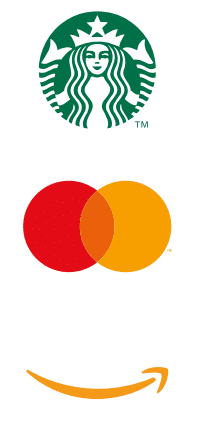
They draw the public’s attention
Besides facilitating brand recognition, distinctive assets can also catch the public’s attention. That is important in the current scenario where, as we said, people receive countless inputs, and brands are forgotten throughout the day.
Research from Ipsos has shown that distinctive assets can boost brand performance to audience attention.
The research showed that among ads that displayed distinctive assets, the ads that performed best on consumer attention displayed these assets 34% more often. Among ads that displayed only the brand name, this made no difference in whether they caught people’s attention.
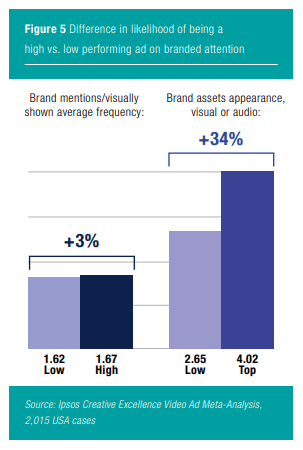
They increase brand recall
Distinctive assets remain there, stored in the memory. All it takes is an input – a chord from a soundtrack or the color combination of a logo – to trigger brand recall instantly.
But this memory does not just bring that brand element to mind. With it, also comes everything that is associated with the brand, such as perceptions, opinions, and sensations that have been stored in your memory through previous experiences. Notice, then, how important it is to provide positive experiences to consumers.
It may be that distinctive assets trigger a memory of the positive feeling that using the product has already provided. But it may also be that the consumer connects it with memories that are not directly related to the brand but their life experiences.
Many of you might remember your childhood, for example, when you heard “Go for it red / go for it black / go for it – Connect Four!” In these cases, distinctive assets connect with affective memories and create stronger ties with people’s emotions.
Another example is the sound of Lego pieces against each other. The brand identified that this sound was recognized by several generations and awakened a positive memory of pleasant afternoons at home, playing and building new projects. Lego even created a project to turn it into white noise to help adults slow down their routine.
They influence the purchase decision
Recall through distinctive assets helps to strengthen the brand image in people’s minds. But this does not only have branding effects. This impact can also result in sales.
After all, when you think of buying a product, certain brands come to mind automatically. When you think of buying a soft drink, you may immediately think of Coca-Cola. When you think of buying a cell phone, you may think of Samsung. These brands, therefore, are top of mind in your life.
Distinctive assets help to put these brands in a special place in your memory to be remembered when the time comes to make a purchase decision.
They create relationships
Distinctive assets that score you a place in consumers’ hearts become part of their lives. They are stored in the memory and trigger positive memories. This affective connection builds relationships between brands and consumers that are not so easily broken.
Oftentimes, distinctive assets become part of conversations because people like to comment on music, sounds, images, or characters that touch their emotions. In even deeper relationships, a logo becomes a tattoo, or a jingle becomes a graduation song, for example.
Think of the unmistakable scent that is all over the stores of jewelry brand Pandora. You just have to walk in front of the door to smell it and immediately trigger the memory of the brand. That is a distinctive asset that is also present in its products, becoming part of the customers’ routine and strengthening their relationship with the brand.
How to insert distinctive assets in your Content Marketing strategy?
Distinctive assets can be used in all brand contact points. Therefore, they can also be used in content strategy in Digital Marketing.
Think about all the channels you use in Content Marketing: your blog, website, social networks, email marketing, etc. Then, think about all the content formats you use: texts, videos, images, photos, audios, among others.
All of this can be used to strengthen the distinctive quality of your brand, or even to create a new one. By reinforcing this aspect in your communication, it can become a distinctive asset that becomes associated with your brand.
For an element to become a distinctive asset and add value to your brand, it must meet two criteria.
- Being unique (Exclusivity): the element must be unique, original and differentiated, to highlight and evoke the brand and not its competitors.
- Being well-known (Fame): the element must be recognized by most of the public to be understood as a representation of the brand.
So, with these criteria in mind, let’s now see how you can reinforce or create distinctive assets in your content strategy.
1. Analyze the distinctive assets of your brand
If you have an established brand, you probably already have elements associated with it, such as colors, logo, slogan, or the font you use. But does the public associate these elements with your brand? Are they really distinctive?
The Ehrenberg-Bass Institute proposes a methodology to identify the potential of distinctive assets, which consists of the following steps:
- Conduct an in-depth study of the brand elements: survey the brand elements to analyze, test, and measure their strength.
- Collect online data: conduct surveys and interviews with the target audience to collect data about the consumer experience and identify how connected the brand and its elements are in their perception.
- Analyze results and recommendations: interpret users’ responses and identify how to use the elements in your brand communication.
To perform the third step, the company uses the distinctive asset grid below. Notice the chart crosses the factors Fame (percentage of consumers who associate the element with the brand) and Exclusivity (percentage of consumers who associate it only with the brand).
From these recommendations, you can identify which elements you should avoid, use, ignore, or reinforce in your content strategy.
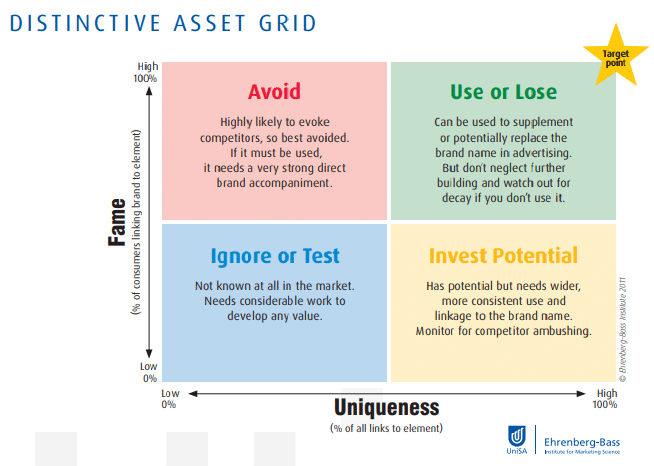
2. Create differentiators in your content
Just because an element belongs to your branding strategy does not mean that it has the potential to become a distinctive asset. So, while developing your content strategy, you can create assets that are associated with the brand.
When thinking about differentiators for your content, remember that they need to be unique and original and catch people’s attention.
Keep in mind that only your brand should use those elements and that they should be able to “stick” to people’s minds. When they see, read or hear that input, they should immediately be reminded of your brand, even when its name is not mentioned.
Here are some ideas of elements that you can include in branded content on distinct web channels:
- Opening sound themes for videos or podcasts.
- Filter for Instagram stories.
- Use of own expressions in texts.
- Use of own fonts in layouts.
- Partnerships with specific influencers.
- Include interactive content in your website to boost engagement
3. Align the distinctive assents with the essence of the brand
Whatever element you choose to use as your distinctive asset needs to be aligned with the essence of your brand. You may want to reinforce the values, purpose, principles, and personality of the brand to define its distinctive assets.
In the end, all forms of communication need to be coherent. Otherwise, it can become unclear and jeopardize the understanding of your branding strategy by consumers.
A brand that has a strong and serious personality cannot use joking expressions in its texts, for example. A brand that defends women’s rights cannot associate its image with an influencer that reproduces sexist speeches, and so on.
So keep an eye on the associations that distinctive assets can elicit and whether they are in line with your branding.
4. Keep communication consistent
Create consistent communication to consolidate distinctive assets in people’s minds.
There is no point in creating an intro song for YouTube videos and only using it once in a while. It is also no good using certain colors for posts on Facebook and using other colors on Instagram.
This way, consumers won’t realize that that element belongs to your brand specifically, preventing them from making the association. To be reminded of your business, they need reinforcement and insistence, with consistency across all content and brand channels.
Examples from successful brands
Now, let’s take a look at some examples of brands that consistently reinforced their distinctive assets in their Content Marketing strategy.
Netflix’s “ta-dum”
If you watch Netflix, you’ve certainly heard a lot of the “ta-dum” that opens any of the company’s productions. It is unmistakable.
And the brand knows it very well. So much that the word ta-dum – onomatopoeia for the sound – has already been used in other products and marketing solutions. In Brazil, ta-dum has already become a handbook, a music festival, a digital event, and a challenge on TikTok.
Notice, then, how Netflix was able to take advantage of and reinforce a distinctive asset in its marketing strategy and content for the public.
T-Mobile’s magenta
Traditionally, mobile communication companies have tried to convey an image of efficiency and stability to gain the public’s confidence. But then comes T-Mobile and launches a visual identity with the color magenta. Not very traditional, is it?
But that’s what the brand wanted. The intention was to differentiate itself from competitors with a lighter, simpler, creative image of a company that is close to the people, especially the younger generation. Moreover, it has a unique color, with personality, which highlights the brand in any channel.
It is not a coincidence that the color magenta has become a distinctive asset. It appears in every form of brand communication – on the website, social networks, blog, even in products, such as sim cards and t-shirts. Check out this event: even the light effects match the color of its trademark magenta!

The Michelin Man
Michelin uses the Michelin Man as a distinctive asset. The mascot is part of the brand’s digital communication channels, interacting with the public, giving product tips and comments on everyday issues.
It is interesting to see how this asset is consistently used across the digital channels and the brand’s content.
The Michelin Man himself is the profile image on the social networks of the brand. He has a background story and is often on commemorative pictures, wishing Michelin’s followers a happy Valentine’s Day or a Merry Christmas.

This strategy guarantees that the distinctive asset remains in the minds of consumers.
Now you know what distinctive assets are and that they should be present in your Content Marketing strategy as well as in all other contact points between your brand and the public.
Be it visual, textual, or audio language, it should serve as a trigger to remind consumers immediately of your brand.
Now that you know everything about distinctive assets, how about creating your Content Style Guide to ensure that all of your brand guidelines are crystal clear?
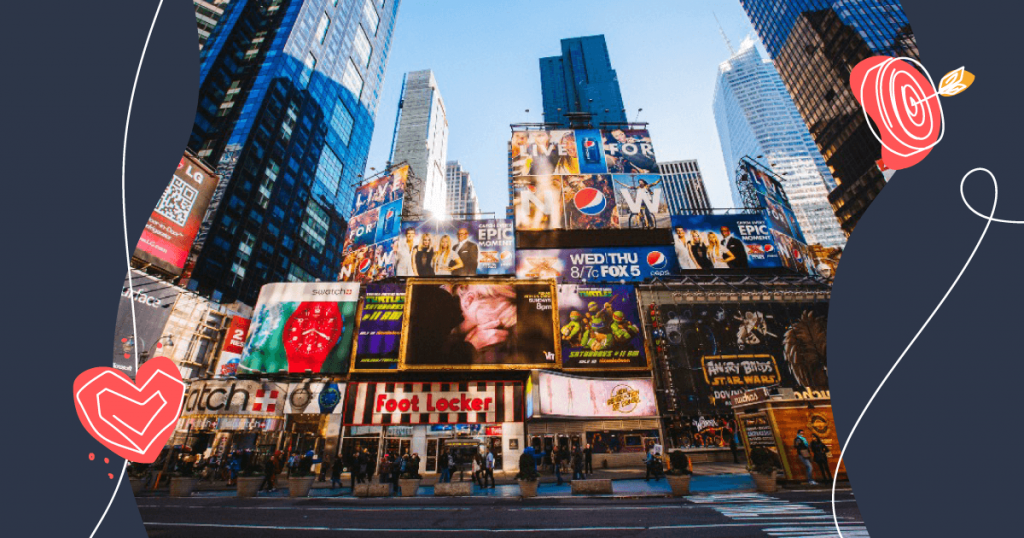


![[ROCK NA] [EBOOK SEO] Complete Guide](https://rockcontent.com/wp-content/uploads/2024/06/banner_Search-Engine-Optimization.png)





